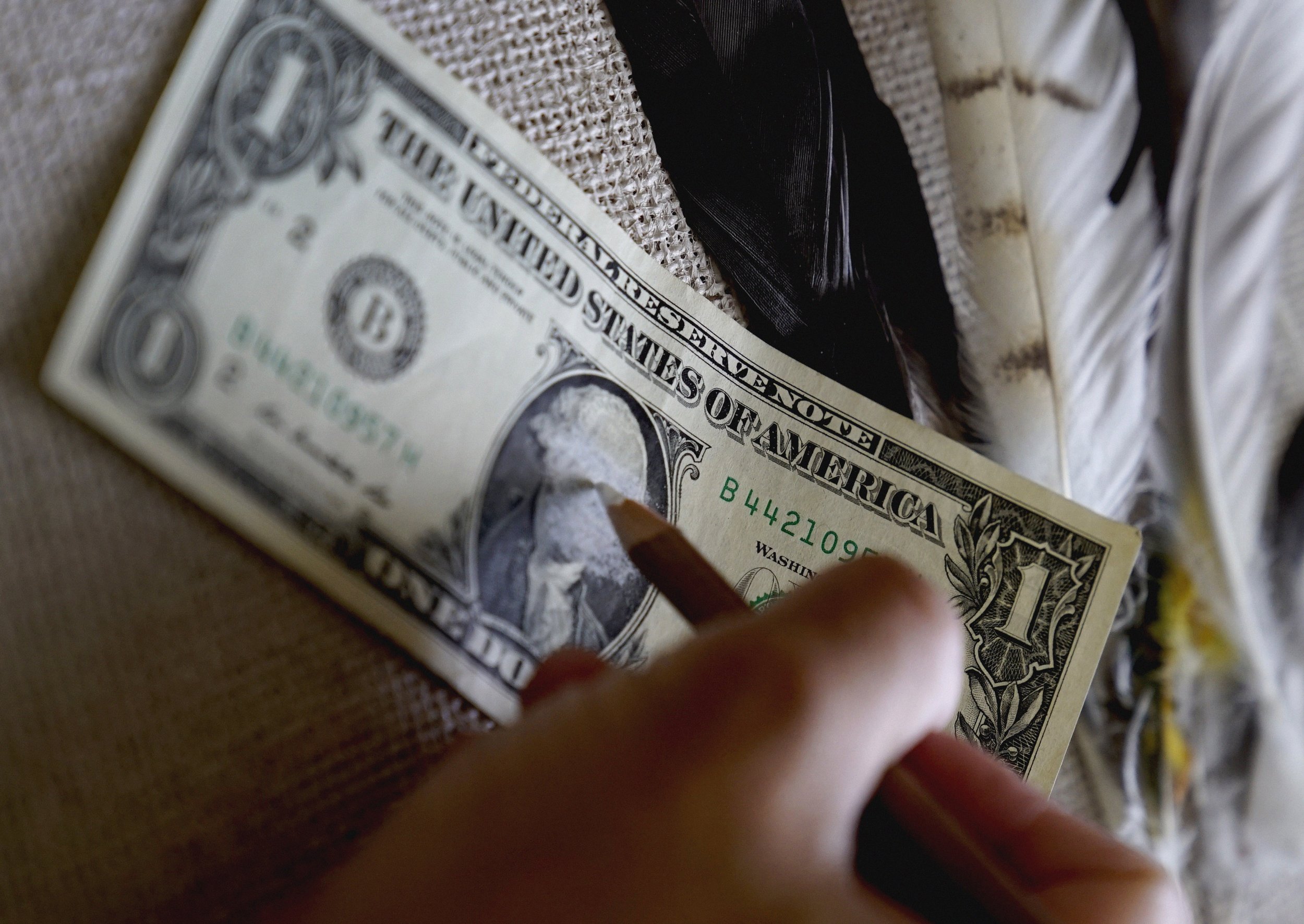
Dollar Drawings
My dollar drawing series celebrates the 500 years of resilience and resistance of indigenous people by depicting important historical figures on U.S. currency as a means to push back against the oppressors of our sacred lands.
BLACK KETTLE
Black Kettle was a leader of the Southern Cheyenne tribes during the American Indian Wars. He is often remembered as a peacemaker who accepted treaties with the U.S. government to protect his people. On November 27, 1868, while attempting to escape the Battle of Washita River with his wife, he was shot and killed by soldiers of the U.S. 7th Cavalry.
CUAUHTÉMOC
The mythology behind the origins of the great Tenochtitlán (present day Mexico City) saw an eagle perched upon a cactus in the middle of a lake, but so too did its final days witness an eagle descend to save it in the form of Cuauhtémoc, the last Tlatoani to lead the glorious Mexica against the invading Spanish foreigners in 1520.
GERONIMO
Born Goyaałé, Geronimo was an Apache leader and medicine man known for his fearlessness in resisting anyone who attempted to remove his people from their tribal lands.
Reservation life was confining to the free-moving Apache people, and they resented restrictions on their customary way of life put on by the United States. Geronimo led breakouts from the reservations in attempts to return his people to their previous lifestyle. His effective leadership skills in raiding and warfare had him command up to 30 to 50 Apaches.
HOPI KACHINA DOLL
The Hopi, a Native American tribe from northeastern Arizona who's descendants constructed complex cliff palaces, have a charm for creating equally exquisite kachina dolls as messengers to the spirit world.
LAPU-LAPU
Lapu-Lapu, or Cilapulapu, was the first Filipino native hero to resist imperial Spanish colonization in 1521.
Modern Philippine society regards him as the first Filipino hero. Monuments have been built all over the Philippines to honor Lapu-lapu's bravery against the Spaniards. The Philippine National Police and the Bureau of Fire Protection use his image as part of their official seals.
LEMPIRA
Lempira was a warrior chieftain of the Lencas of western Honduras in Central America during the 1530s, when he led resistance to Francisco de Montejo's attempts to conquer and incorporate the region into the province of Honduras. His cause of death is often debated, some stories saying he died in battle while the history books claim that because the Spanish invaders couldn’t kill him, they sent a messenger to tell him they wanted peace. Lempira was then tricked into being captured and dismembered while his body was buried in undisclosed locations so no one could pay him respects. The country of Honduras honors him by naming their currency after him.
PRETTY NOSE
Pretty Nose, an Arapaho tribe woman, participated in the Battle of the Little Bighorn in 1876, the most prominent conflict of the Great Sioux War which resulted in the defeat of United States forces. According to her grandson, she wore cuffs that indicated she was a war chief.
She lived to be 101 years old.
SITTING BULL
Sitting Bull was a Hunkpapa Lakota leader who led his people during years of resistance against the United States government in the 1800's. The Hunkpapa was a Lakota Sioux tribe that roamed the Great Plains in what is now the Dakotas.
He was renowned for his skill in close quarters fighting and collected several red feathers representing wounds sustained in battle.
TENAMAXTLI
Temanaxtli, the Native American leader of the Caxcans and the Mixtón War, pushed back against Spanish armies in the name of Nochistlán, where he served as Tlatoani.
From 1540 until 1542 the Caxcans and other semi-nomadic indigenous people of north-western Mexico went to war against Spanish invaders after they attempted force them into servitude. Temanaxtli, a name meaning “stones heated by fire,” has a statue on the main square of Nochistlán de Mejia, Zacatecas.
YAQUI DEER DANCER
A Yaqui deer dancer accesses spiritual worlds through the art of kinetic energy. The enchanting deer emerges into the wilderness and dances in the flower world as a way to release any harm caused by the natural world. This sacred ritual is an anchor to identity of the Yaqui/Yoeme tribe, Uto-Aztecan speaking indigenous people ranging from Mexico to the Southwestern United States.
